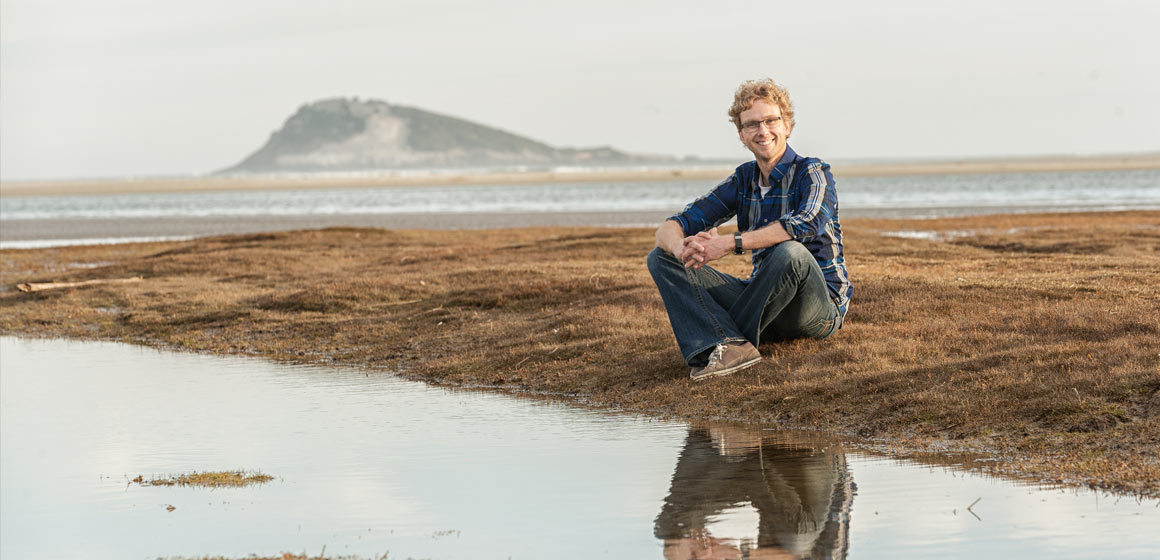
Dr Rob Middag is on a quest to find out more about oceanic trace metals – essential nutrients for all organisms – and how these are affected by changes in the environment.
Chemical oceanographer Dr Rob Middag's passion for metals has resulted in his receiving the 2014 Heineken Young Scientists Award for Environmental Sciences from the Royal Netherlands Academy of Arts and Sciences.
The accolade, for outstanding and inspirational research, credits Middag with quadrupling the world's data on some oceanic trace metals in just a few years.
Middag downplays the claim. “It's true that we have increased the amount of data exponentially for some metals we knew little about, but for more familiar metals we've just added to existing data. But it's good to think we are making a difference.”
His research investigates modern ocean processes that control the distributions of key trace elements and aims to establish how sensitive they are to changing environmental conditions.
“Metals are not usually regarded as food, yet they are essential nutrients for all organisms. They form the reactive centres of enzymes, enabling these to perform biochemical functions, such as oxygen-transport or photosynthesis.
“As such, trace metals are central to the health of individual organisms as well as entire ecosystems. But it is only now that we are starting to understand the influence of metals on ocean ecosystems.”
Middag studied in the Netherlands and the US before joining Otago's Department of Chemistry and the world-leading Centre for Chemical and Physcal Oceanography where he is continuing his global study in the Southern and Antarctic Oceans.
Research into the biogeochemistry of trace metals in seawater involves lengthy oceanic expeditions as well as local fieldwork to determine the sources, sinks and cycling of metals around the world.
Middag's latest expedition to Antarctica, in collaboration with Stanford University and colleagues from Otago, is investigating run-off from glaciers and how differing trace elements entering the ocean affect different species of algae.
“In the ocean, the base of the food web is formed by unicellular algae known as phytoplankton. The phytoplankton bloom that occurs each spring attracts all kinds of marine life that feeds in Antarctic waters. Therefore, it's important to know how different nutrients and trace metals affect the overall growth of phytoplankton, as well as the growth of individual phytoplankton species as not all of them are equally suitable as food for higher organisms.
“It's also important because algae are big absorbers of the greenhouse gas carbon dioxide and can take it deep into the ocean, helping to slow the rate of climate change. Some species are better at that than others and that will be useful to know when predicting what might happen in the future.”
The team is learning about algae through their interaction with various elements such as iron and manganese, as well as the cobalt-containing vitamin B12.
Traditional water-sampling research used to measure one trace metal at a time, but Middag and his colleagues have developed new time-saving methods of measuring several metals in the same sample.
It's painstaking work, involving minute quantities. “Samples are 99.99 per cent seawater and sea salt, so once you separate that out there's not much left to work with. The trace element proportion is only 0.01 per cent and metals are only a fraction of that. When you are dealing with such small samples the possibility for contamination is great. The analysis has to be pretty sophisticated.”
Middag is looking forward to using Otago's latest high-resolution sector field mass spectrometer, which will make identifying elements faster and more accurate.
“This study is exciting because the focus on trace metals is relatively new and the research has so far been very productive in terms of knowledge gained and a score of publications.
“My ultimate dream is to analyse the entire composition of ocean water, including substances that are present only in very minute concentrations, and then to be able to unravel the interactions between all these components.”
Funding
- Dutch Mediterranean GEOTRACES Programme
- Netherlands Organisation for Scientific Research (NWO) Division Earth and Life Sciences (ALW)
- University of Otago Research Grant
- University of Otago Large Equipment Grant
- US National Science Foundation